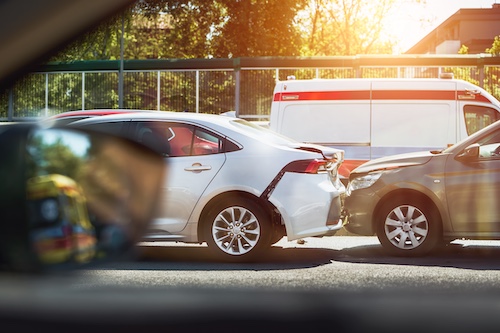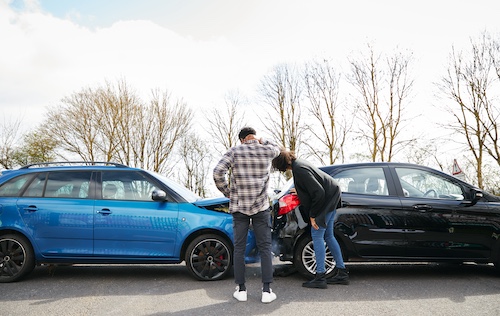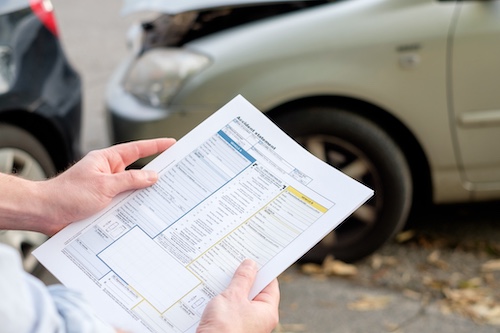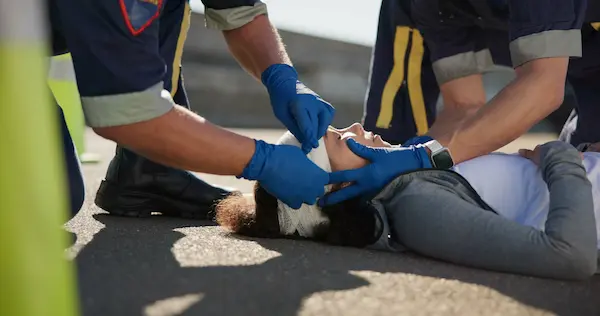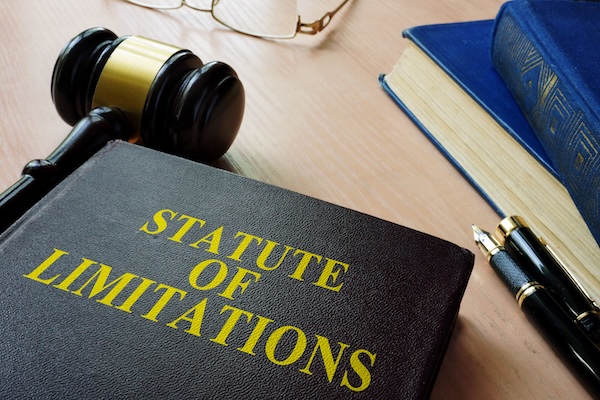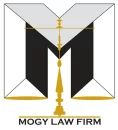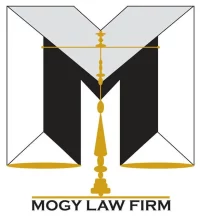Understanding Fault in Rear-End Collisions in Tennessee
Rear-end collisions are one of the most frequent types of auto accidents on Tennessee roads. These crashes often appear simple but can raise complex questions about fault, especially when serious injuries or multiple vehicles are involved. Tennessee law generally places blame on the rear driver, but exceptions exist. Knowing how fault is determined, what evidence matters, and when to involve a car accident lawyer can make a major difference in the outcome of your case.
In this blog, we explain how fault is determined in rear-end collisions, outline common causes and injuries, and highlight key steps to take after a crash, including why working with an experienced Memphis car accident attorney can help protect your rights and strengthen your claim.
Common Causes of Rear-End Collisions
Rear-end collisions are often preventable. Most are caused by driver error, poor judgment, or failure to maintain a safe following distance.
Distracted Driving
Distracted drivers cause many rear-end crashes. Looking at a phone, adjusting the radio, eating, or talking to passengers can take attention off the road. Even a few seconds of distraction can prevent a driver from seeing brake lights or a sudden stop by the vehicle ahead. These moments often lead to the trailing driver crashing into the front vehicle.
Following Too Closely
Tennessee drivers are required by T.C.A. § 55-8-124 to keep enough space between vehicles. A driver who does not leave a safe following distance may not have time to stop when traffic slows. Rear-end car accidents often happen in heavy traffic where drivers tailgate or try to close gaps quickly.
Aggressive Driving and Brake Checking
Aggressive behavior like speeding, weaving between cars, and brake checking leads to serious rear-end collisions. A front driver who hits the brakes on purpose may be partly at fault if the sudden stop was unreasonable. These actions can cause chain reaction crashes, especially when multiple vehicles are involved.
Poor Weather Conditions
Wet roads, fog, and low visibility make it harder to stop in time. Drivers who fail to adjust their speed for rain or icy pavement often cause rear-end accidents. Maintaining control and allowing more stopping distance is essential in bad weather.
Driver Fatigue
Tired drivers have slower reaction times. Fatigue reduces a driver’s ability to notice traffic changes, such as a vehicle slowing ahead. Rear-end collisions caused by fatigue often result in more serious injuries because the driver doesn’t brake in time.
Malfunctioning Brake Lights
A driver may crash into the car ahead if they cannot see that it is slowing down. Malfunctioning brake lights on the leading vehicle can increase this risk. Still, the rear driver must prove the lack of visibility contributed directly to the crash to shift fault.
Sudden Stops or Lane Changes
Sudden stops without warning often lead to rear-end crashes. Similarly, abrupt lane changes can force the following vehicle into a situation where avoiding a collision is impossible. These actions create confusion and reduce reaction time.
Presumption of Fault in Rear-End Collisions
In Tennessee, fault in a rear-end collision is often assigned to the driver in the rear, but there are exceptions depending on how the accident occurred.
Default Assumption: The Rear Driver Is at Fault
The most common rule in a rear-end car accident is that the following driver is at fault. Tennessee law expects drivers to maintain a safe distance from the vehicle ahead. If the rear driver crashes into the front vehicle, it is usually because they failed to leave enough space or were not paying attention.
Under Tennessee law, all drivers must follow another vehicle at a distance that is reasonable and prudent. This law is often used to prove fault in rear-end collisions. A driver who violates this law by following too closely may be considered negligent.
Challenging the Presumption
While the rear driver is usually blamed, this is not automatic. Tennessee follows a modified comparative fault system. If the front driver acted recklessly, they may share responsibility. For example, if the leading vehicle made a sudden stop without cause or had no working brake lights, they may be partly at fault.
The rear driver can challenge the presumption by showing evidence such as dashcam footage, witness statements, or a police report that supports their case.
Shared Fault and Comparative Negligence
Tennessee allows fault to be split between both parties. If the injured party is 50 percent or more at fault, they cannot recover damages. If they are less than 50 percent at fault, their compensation is reduced by their percentage of fault. This rule often applies when both drivers made mistakes, such as distracted driving by the rear driver and brake checking by the front driver.
How Insurance Companies Use the Presumption
Insurance companies may try to shift blame to avoid paying full compensation. They may argue the injured party caused or contributed to the crash. This is why strong legal representation from a car accident lawyer is important after a rear-end collision. A lawyer can help collect key evidence and protect your claim.
Scenarios That Complicate Fault
Not every rear-end collision is straightforward. Certain conditions can make it harder to determine who is legally responsible for the crash.
Chain Reaction Crashes
In accidents involving multiple vehicles, fault may be shared among several drivers. If a car is pushed forward into another vehicle after being struck from behind, the trailing driver who caused the first impact may be responsible for all vehicles involved. These chain reaction crashes often happen in heavy traffic or during poor weather conditions.
Sudden Stops Without Warning
A front driver who slams on the brakes without a valid reason may contribute to a rear-end accident. If the rear driver was keeping a safe following distance and driving responsibly, they may argue that the sudden stop was unreasonable. In some cases, evidence of brake checking can shift some fault to the front vehicle.
Malfunctioning Brake Lights
If the brake lights on the leading vehicle are not working, the following driver may not realize the car ahead is slowing down. Malfunctioning brake lights can be a critical factor when determining fault. However, the rear driver still has a duty to drive attentively and may not be cleared of responsibility entirely.
Illegal or Unsafe Lane Changes
When a vehicle changes lanes suddenly and without enough space, it can force the following driver to react too late. If the lane change leaves no time to adjust speed, the front driver may be held partially at fault for causing the conditions that led to the rear-end crash.
Poor Road or Weather Conditions
Rain, fog, ice, and road debris can all reduce visibility and traction. Drivers must adjust their speed and increase their following distance during unsafe driving conditions. Failing to do so may result in shared fault if an accident occurs. The environment does not excuse careless behavior but can influence how fault is assigned.
Comparative Fault in Tennessee
Tennessee uses a modified comparative fault rule. If the injured party is 50 percent or more at fault, they cannot recover compensation. If they are less than 50 percent at fault, their recovery is reduced by their percentage of fault. These rules apply in cases where both drivers contributed to the accident.
What to Do at the Accident Scene
What you do immediately after a rear-end collision can affect your health, your legal rights, and your ability to seek compensation.
Check for Injuries and Call 911
First, check yourself and others for physical injuries. Call 911 to report the crash and request medical help if anyone is hurt. Even if injuries seem minor, emergency responders should assess the situation. Getting prompt medical attention also creates a record of the injuries sustained.
Move to Safety If Possible
If the vehicles involved are blocking traffic and it is safe to do so, move them to the side of the road. Turn on hazard lights to warn other drivers. Staying in active lanes increases the risk of a secondary collision, especially in heavy traffic or poor weather conditions.
Exchange Information with the Other Driver
Get the name, contact details, license plate number, and insurance information from the other driver. Be respectful but avoid discussing fault. Do not admit fault or say anything that could be used against you later by insurance companies or in a personal injury lawsuit.
Document the Accident Scene
Take clear photos of the accident scene, including vehicle damage, skid marks, brake lights, and traffic signs. Capture the position of each car and any visible injuries. This evidence helps support your claim and may help your car accident lawyer prove fault or defend against false claims.
Talk to Witnesses
If there are any witnesses, ask for their contact information and a brief statement. Witnesses can provide neutral accounts of what happened, including whether a sudden stop or distracted driving was involved. Their input can be key evidence in a rear-end accident case.
File a Police Report
Ask the officer on scene to complete a police report. This document includes facts about the crash, statements from drivers and witnesses, and the officer’s observations. Request a copy for your records. Insurance companies and legal professionals often use this report when determining fault.
Avoid Discussing the Accident on Social Media
Do not post details, photos, or opinions about the crash online. Insurance companies may review your social media activity and use it to shift blame or deny your claim. Keep all communication about the accident private until you speak with an attorney.
Consult With an Experienced Memphis Car Accident Lawyer ASAP!
If you or a loved one has suffered injuries in a rear-end collision, don’t face the insurance companies or legal process alone. Our team at Mogy Law Firm has the experience and focus to handle rear-end accident cases with the attention they require. We understand how to gather key evidence, deal with insurance adjusters, and build a strong claim for compensation.
Contact us at (414) 334-5472 for a free claim review today!
